If you’re serious about creating a bulletproof content marketing strategy, you need to conduct a content gap analysis. This allows you to identify areas that you might have missed in your content. This article will walk you through the importance of a content gap analysis and provide a step-by-step plan to perform one.
What is a content gap analysis?
A content gap analysis is a process in which you identify gaps in your current content creation plan. This can be done through internal research, competitor research, keyword research, and more. The point is to show what content you need to create in order to expand your current strategy.
The purpose of this process is two-fold. First, it helps you make sure you aren’t missing any gaps when it comes to content. Second, it allows for optimal organization of your newly found information (including topics and keywords).
What is the importance of a content gap analysis?
By doing a content gap analysis, you’ll be able to see what topics your audience is looking for. This will allow you to create content around specific topics and keywords and ensure that you’re giving your audience what they want- which adds up to better-performing content. Another option is to use a contract creator to create standardized content and templates in a format that can be edited and optimized within a browser-based environment.
By creating better content, you’ll be able to build trust with your customers, increase brand loyalty, and boost your authority and credibility within your industry. This will, in turn, drive traffic to your site, supercharge your rates of engagement, and, ultimately, your conversions.
Who would benefit from content gap analysis?
Whatever the size of your business, whether you’re a small business owner or even a large corporation, anyone trying to create a content marketing campaign or improve upon their existing one can benefit from a content gap analysis.
10 Steps to conducting a holistic SEO content gap analysis
In this section, we’ll look at exactly how to conduct a holistic SEO content gap analysis. Follow these steps carefully, and you’ll be able to identify any significant gaps in your content plan.
1. Download the right templates
Before you start conducting your content gap analysis, you should equip yourself with the right services proposal templates. This will help you stay organized. Each of these will come in handy throughout the analysis process—from helping you to assess the value of your current content to enable you to plan the perfect schedule to publish your pieces to fit every stage of the funnel. These will also be adaptable enough to suit whatever type of business you run.
Content Audit Template
you should use a content audit template because it will allow you to sift through all of your current content. You can then take the time to weed out irrelevant data while also identifying which topics are already being covered well. This will give you an idea of just how much new content is needed moving forward. It’s also crucial that you use a content audit template because it will allow you to identify gaps in your current strategy.
You can source your templates from CoSchedule, HubSpot, and Distilled, or use these as inspiration to create your own.
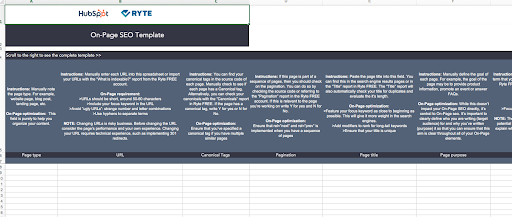
Topic Analysis Template
using a topic analysis template is crucial, as it will help you identify any gaps that exist for each keyword of interest. It’s essential that you take the time to examine all of your data before moving forward with anything else.
Reddoor provides a useful template.
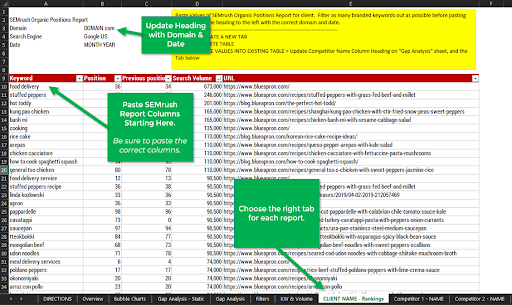
Customer Journey Mapping Template
By using a customer journey mapping template, you can create a visual representation of your strategy. This will help you see the relationship between all of your content and how it relates to different buyers’ journeys across multiple stages of the buying cycle.
Hubspot and Miro offer templates.
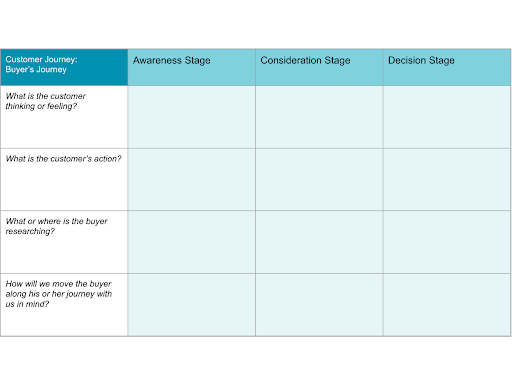
Marketing Calendar Template
You should also download a marketing calendar template, as you’ll need this for setting out your content map. If done correctly, you can ensure that all of the current content is mapped to the different stages of the buyer’s journey.
Again, Hubspot and CoSchedule offer helpful template options.
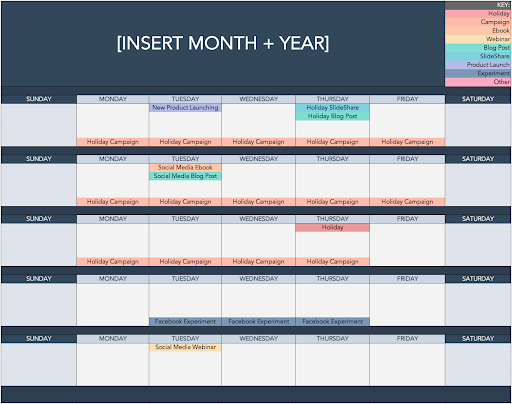
2. Choose the right tools
It’s crucial that you choose the right tools to improve the accuracy and efficiency of your content gap analysis. Here are some great options you can use:
SE Ranking – a platform that enables you to perform every critical SEO task in one place, including each step in the content gap analysis process.
SE Ranking’s Competitive Research tool helps you to identify keywords that other companies target to drive traffic to their sites and rank in search, but your site doesn’t. This provides you with a list of keywords that could be valuable for you to target and gives you an insight into the type of content your competitors are producing to rank for these.
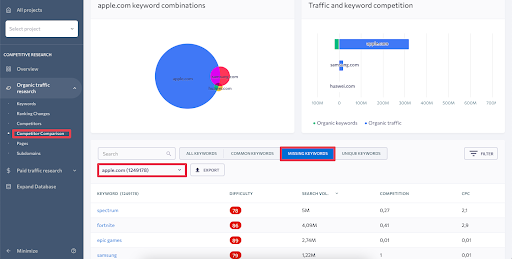
Under the Competitor Comparison tab, SE Ranking allows you to compare your site to multiple major competitors simultaneously to find out all the keywords you’re missing out on that rivals are ranking for. The Analytics & Traffic module shows you a list of keywords that drive impressions and clicks on Google and which can, therefore, improve the visibility of your business website in search should you focus your optimization efforts on these.
BuzzSumo – One of the best things about using Buzzsumo is being able to see what types of content resonate most with your audience. Simply type in a keyword, hit enter, and you’ll be able to see the most popular content in your industry. As explained above, you can use the insights gained from competitors here to help bridge the traffic gap. By evaluating where competitors rank better and why you can optimize your own strategy to include valuable keywords.
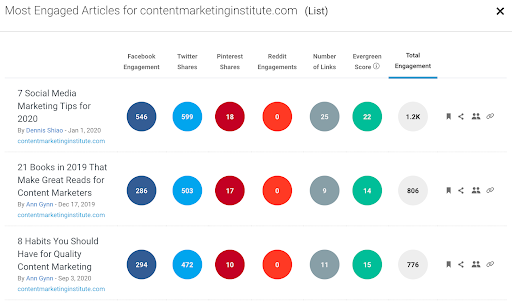
3. Perform keyword research
Performing keyword research is another crucial step. With this, you’ll be able to identify which keywords are bringing in the most organic traffic, allowing you to map out your content accordingly. This process can also help you uncover any gaps or opportunities that may exist at various stages of the buyer’s journey.
The first step in this process is to ask yourself how your audience is searching for the product or service you provide. What terms are they inputting into search engines? You’ll probably have a list of these in mind that relate directly to your product or services. These seed keywords will help you identify similar keywords and variations that are most popular among searchers.
Using a tool like SE Ranking will speed up your research, providing you with detailed statistics on your seed keywords, including their search volumes and other search queries, relevant phrases, and search engine suggestions related to these. It will also assign a keyword difficulty score to demonstrate how competitive an organic keyword SERP is- the higher the search volume of a keyword, the more difficult it’ll be to achieve ranking success.
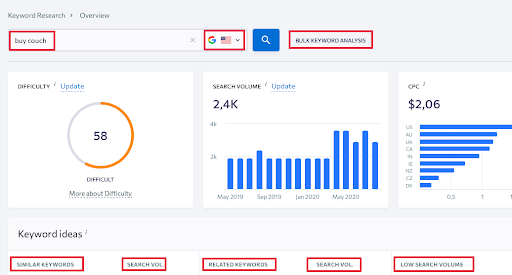
Keyword Competition
High and low competition keywords both have their advantages. Long tail keywords with lower search volumes often yield higher conversions, because searchers looking for something more specific are likely further along the sales funnel and looking to make a purchase. Integration in salesforce CRM can help users and managers make better decisions often faster, improving user experience. So, keep an eye on search volume to help you prioritize the keywords you want to focus on.
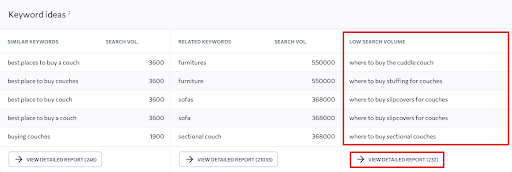
The next step is to identify your site’s top competitors and track down high-volume keywords that your competitors are not currently ranking for as well as those for which your competitors rank, and you don’t.
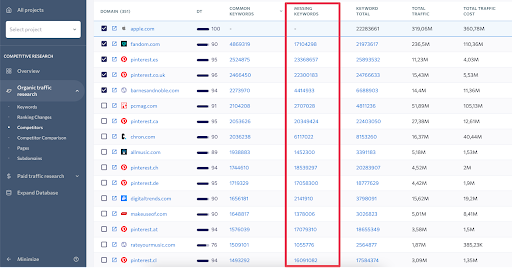
Your content strategy should also involve targeting keywords by season and region. If certain terms including “Christmas” start to spike from November through to the end of December, preparing content to target related keywords could be beneficial.
Equally, if you’re targeting a specific location, you should narrow down your research to your chosen countries. If you aim to sell your candy in the UK, geo-specific research will demonstrate to you that the preferred term to use in your content is “sweets”.
4. Map out your buyer’s journey
Once you know the topics/keywords your audience is looking for, it’s up to you to create compelling content that meets their needs. By mapping your content back to different stages of the buyer’s journey, you can ensure that what you’re creating caters to readers of all levels of knowledge on a given topic or your product or service.You must, therefore, be familiar with the five stages of the customer journey:
5 Stages of the Customer Journey
From awareness—when prospects become familiar with your brand, consideration—when they think about whether or not to buy the product/service you offer, and purchase—when they buy the product/ service, retention—when customers use your product/service and engage with you to seek your guidance, to advocacy—when they spread the word about your business, different content will resonate more with prospects. For example:
At the awareness stage, you want to answer prospects’ questions about what your product is and why it matters. Your content, therefore, might include online ads and social media posts.
At the consideration stage, you should provide more detailed information about your product/service to demonstrate that you can provide a solution to prospects’ problems and establish their trust in your brand. Content should include landing pages, blog posts, ebooks, and whitepapers citing use cases, competitor comparisons, and the benefits of your product/service’s use, as well as marketing emails.
At purchase, your brand website and mobile app content are critical. Your contact and support pages should be your areas of focus. You could also consider composing remarketing emails to target customers who have abandoned their shopping carts.
Having this knowledge is crucial to delivering successful online content marketing services, as it helps ensure that your audience isn’t left wondering where to go next. By mapping content in this way, you’re taking the guesswork out of the entire process for your users and consistently driving them to the next stage in their journey.
5. Conduct market research
Once you’ve mapped out your buyer’s journey, you’ll be able to conduct market research. This is an essential step because it will help provide the necessary context for creating a content map—this will include details about your target audience, their stage in the customer journey, the topic of your content, its format, your selected CTAs, where this will be published, and when.
A great way to learn about your target audience and identify their pain points is by conducting surveys and interviews with them. You can also learn about what they enjoy reading and what topics they feel should be covered in-depth.
To identify content gaps, you can create short surveys on social media targeting prospects at the awareness stage and ask them about how they found out about your brand or more extended post-purchase questionnaires via email to pick up on what content customers might find useful.
It’s also a good idea to keep track of queries mentioned frequently by customers when they reach out to a chatbot customer service so that you can address these on your site in FAQs, for example.
6. Analyze the content on your website
Once you’ve downloaded your content audit analysis template, it’s time to start analyzing the main areas of your website. This will allow you to see if new content is necessary at any given point. If it seems like there are gaps that need to be filled, now is the perfect time to map out a strategy for creating new blog posts or other types of content.
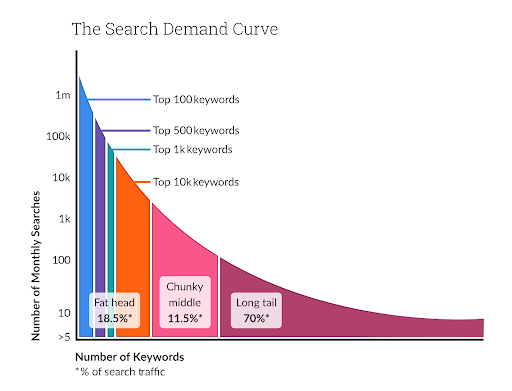
7. Analyze your competitors’ content
After you’ve analyzed your main website and any other relevant areas, you can go ahead and analyze your competitors’ content. An SEO competitor analysis report will be crucial for uncovering gaps that exist as a result of them covering certain topics in greater depth than you do. You can carry this out most efficiently by using SE Ranking’s Competitive Research tool, as we mentioned earlier.
8. Decide on which content areas to focus
It’s now time to select specific areas for your team to focus on. Make sure that you prioritize the most relevant ones and figure out the best course of action to fill in any existing gaps.
You should focus on areas of content that are highly relevant to your audience and that drive plenty of traffic to your website. For example, a SaaS SEO company would need to focus on topics like RPA technology and SEO automation. A communications business might instead want to create content about Voice Intelligence and helpful collaboration tools for remote work. And a beauty retailer could generate posts around at-home peels and masks and prebiotic skincare.
9. Have a clear strategy for filling gaps
Now that you’ve pinned down the best course of action for filling in gaps found during your content gap analysis, it’s time to put all your research together in your content map and make sure everyone on your team is aware of their role in working towards its navigation.
You’ll need to make sure you have a content team capable of planning, organizing, writing, optimizing, and editing all your new content. You must also facilitate seamless communication between your content, marketing, and social media teams should any unexpected opportunities arise or plans change.
10. Launch your content and measure its performance
Once your team has launched any new content that fills in gaps found during your analysis, it’s time to measure the results.
Well, it will take some time after publishing your content to be able to measure its effects—this will depend on the popularity of your chosen keywords and the amount of competition there is to rank for these. At the least, it can take around three months to see results. Though, for very low competition keywords, you could see results in just weeks.
When you’re able to measure your results, take note of how much traffic is driven to each page, your keyword rankings, organic traffic, and click-through and conversion rates.
SE Ranking’s Keyword Rank Tracker gives you daily updates on your rankings across multiple locations. It also allows you to monitor the search visibility of your whole site, groups of keywords, and separate keywords, along with tracking essential metrics like click-through rate, organic traffic, and referral traffic.
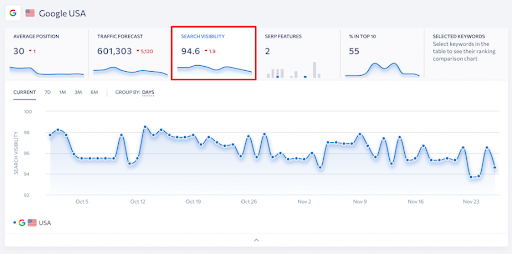
Once you’ve carried out a thorough analysis of your results, you’ll be able to see which gaps should be filled, as well as the best course of action for doing so.
In summary
A content gap analysis provides an in-depth look at the content currently on your website and your competitors’ content. This allows you to see which areas need additional attention, allowing you and your team always to produce the highest quality work. It also helps you rank for keywords that you might have missed in your initial content plan. To maintain a holistic strategy for content marketing, you should be performing a content gap analysis regularly.


